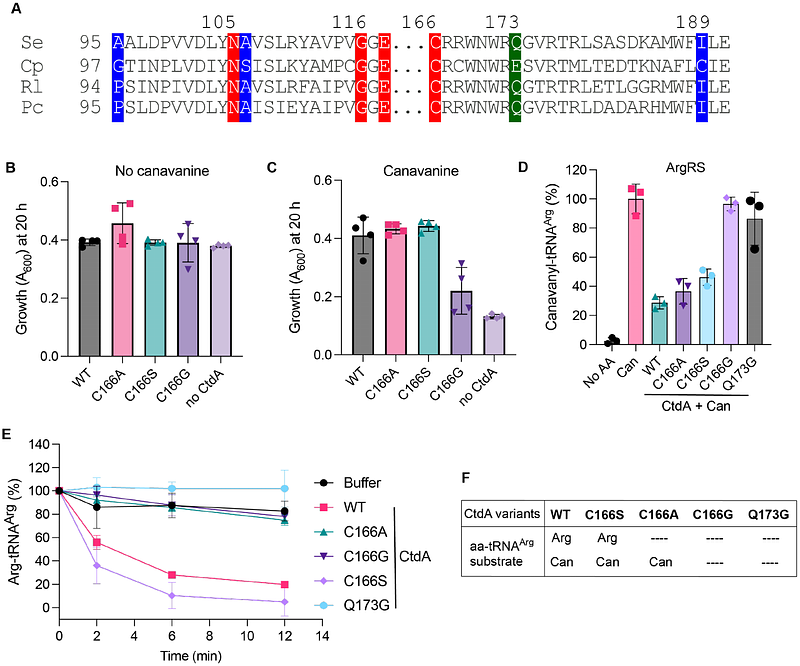Mechanistic and evolutionary insights into a family of aminoacyl-tRNA deacylases that protects against canavanine toxicity

Mechanistic and evolutionary insights into a family of aminoacyl-tRNA deacylases that protects against canavanine toxicity
Maldonado, J. S.; Sepulveda, S.; Karthikeyan, S.; Shirakawa, K. T.; Merced, I.; Radecki, A. A.; Douglas, J.; Peti, W.; Page, R.; Vargas-Rodriguez, O.
AbstractAminoacyl-tRNA deacylases safeguard the accurate translation of the genetic code by hydrolyzing incorrectly synthesized aminoacyl-tRNAs. Canavanyl-tRNA deacylase (CtdA) was recently shown to protect cells against the toxicity of the non-proteinogenic amino acid canavanine, which is synthesized and accumulated by various plants. In most organisms, canavanine is ligated to tRNAArg, causing translation of arginine codons with canavanine. CtdA prevents canavanine toxicity by hydrolyzing canavanyl-tRNAArg. Here, we investigated the function, structure, substrate specificity, phylogenetic distribution, and evolution of CtdA. We show that CtdA is essential to prevent canavanine cytotoxicity in Salmonella enterica, and its heterologous expression can also rescue Escherichia coli. By determining the structure of CtdA, we identified its putative binding pocket and residues that modulate enzymatic activity and specificity. We also found that CtdA displays a relaxed specificity for the aminoacyl moiety substrate as it hydrolyzes arginyl-tRNAArg. Finally, we showed that despite their structural homology, CtdA and the aminoacyl-tRNA hydrolytic domain of phenylalanyl-tRNA synthetase are functionally and evolutionarily divergent. Collectively, these results substantially expand our understanding of the CtdA family, providing new insights into its structure, function, and evolution. Moreover, this work highlights the diverse mechanisms unique to each organism to ensure faithful translation of the genetic code.